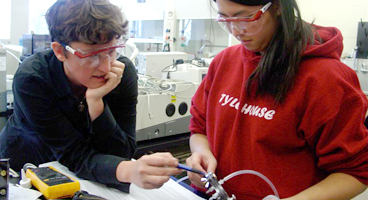Document Type
Article
Publication Date
2001
Abstract
A quantitative model of the human middle ear with a tympanic-membrane ~TM! perforation is developed. The model is constrained by several types of acoustic measurements made on human cadaver ears, which indicate that perforation-induced changes in transmission result primarily from changes in driving pressure across the TM and that perforation-induced change in the structure of the TM and its coupling to the ossicles contributes a substantially smaller component. The model represents the effect of a perforation on the pressure difference across the TM by inclusion of a path for sound coupling through the perforation from the ear canal to the middle-ear cavity. The model implies that hearing loss with perforations depends primarily on three quantities: the perforation diameter, sound frequency, and the volume of air in the middle-ear cavity. For the conditions that produce the largest hearing loss ~low frequency and large perforation!, the model yields a simple dependence of loss on frequency, perforation diameter, and middle-ear cavity volume. Predictions from this model may be useful to clinicians in determining whether, in particular cases, hearing losses are explainable by the observed perforations or if additional pathology must be involved.
Volume
110
First Page
1445
Last Page
1452
DOI
10.1121/1.1394196
Rights
© 2001 Acoustical Society of America.
Recommended Citation
Voss, Susan E.; Rosowski, John J.; Merchant, Saumil N.; and Peake, William T., "Middle-Ear Function with Tympanic-Membrane Perforations. II. A Simple Model." (2001). Engineering: Faculty Publications, Smith College, Northampton, MA.
https://scholarworks.smith.edu/egr_facpubs/140


Comments
Archived as published.